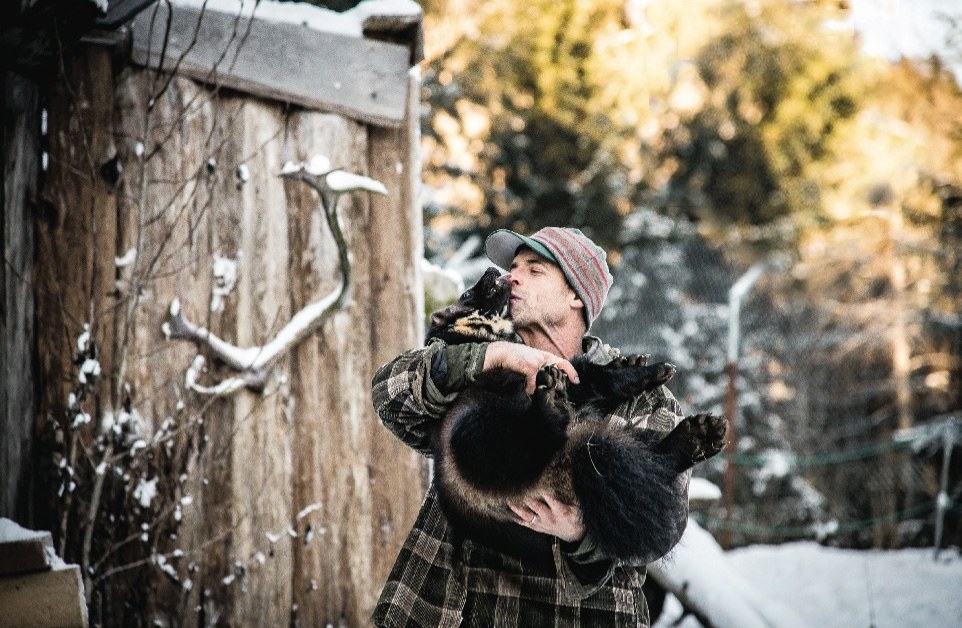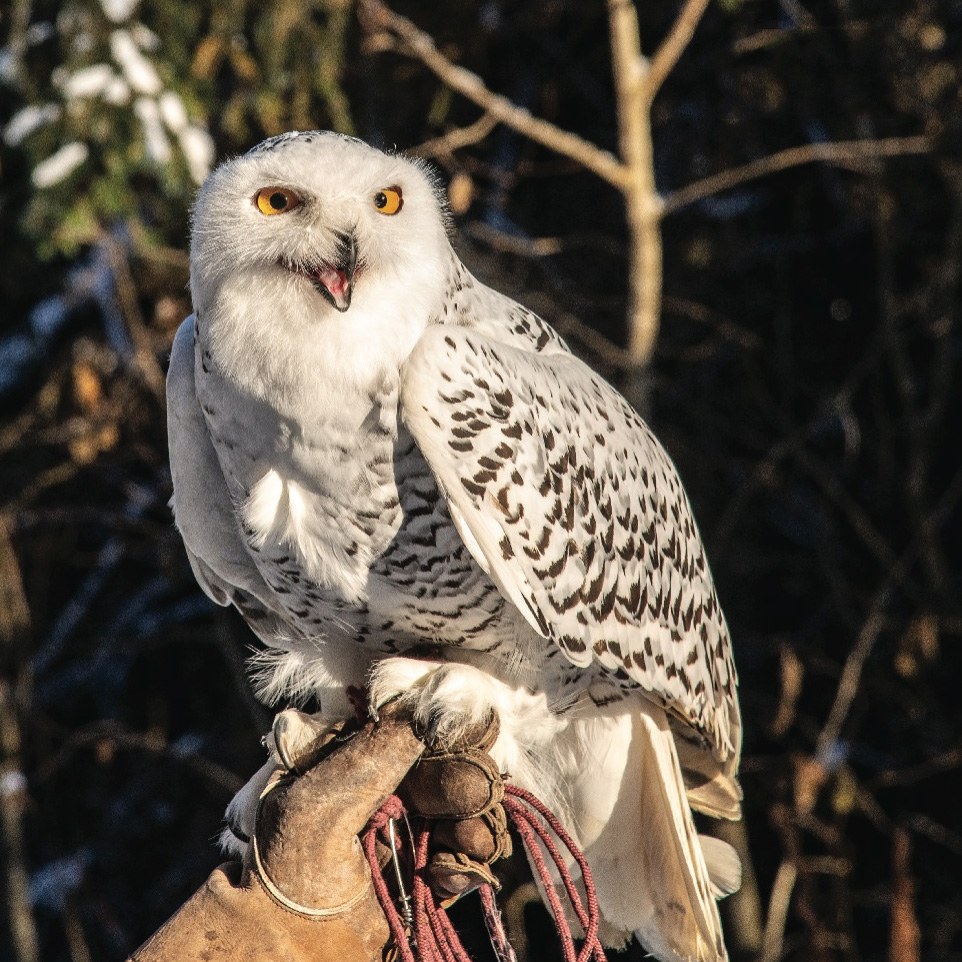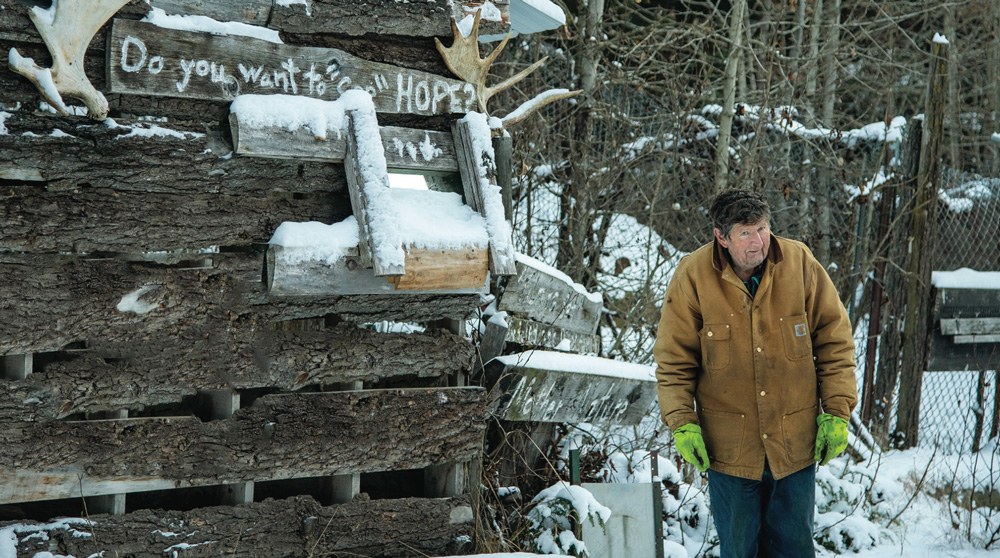
Kroschel Wildlife Center delights visitors
Tucked away into the shoulder of a mountain beyond a rusted gate is a haven for rescued and orphaned wildlife indigenous to Canada and Alaska and, with a five-star Travelocity rating, one of the best tours in Alaska. Steve Kroschel, the mastermind and showman behind Kroschel Wildlife Center in Haines, Alaska, understands nature and animal behavior and thrives on sharing it with others. Enter the sanctuary, and he’ll introduce you to Isis the wolf, Banff the wolverine, and Karen the moose. In fact, more than 15 species of wildlife call Kroschel’s home, living on 60 acres with Steve, on “film sets” where photographers and filmmakers can capture the animals in a natural setting devoid of bars or fencing or through specially made camera holes.
Steve grew up on a farm in northern Minnesota as the third generation of his family working with orphaned North American wildlife. “I began to do presentations at school with live animals,” Steve says. “Growing up with wildlife gifted me with opportunities to witness the everyday miracles of animal behavior and nature’s other beautiful revelations. I don’t know what normal life is like without a wild animal following me or on me or me chasing after it.” These early experiences led to a career as a filmmaker in the 1980s, apprenticing on Disney’s classic True Life Adventure films, where he worked training wolves. “It was at that unhurried time that I was able to assimilate the deep and important lessons of the wilderness. That we, as humans, can’t ignore these natural heartbeats around us.”


Make no mistake, Kroschel’s isn’t a zoo, and that’s what makes it special. Kroschel’s, a private nonprofit run solely by visitors’ donations, provides intimate interaction with fox, grizzlies, snowy owl, reindeer, ermine, porcupine, black bear, lynx, and other on-site wildlife. Decades of raising and caring for these animals mean that visitors are in the capable hands of a true wildlife whisperer—a gifted prodigy, eccentricities included.
Rumors about the man drift through Haines and beyond like thick Southeast fog. Before meeting him, you might hear that he shared his cabin with a pet bobcat until his wife left him over it. Or, that Steve’s skin is permanently tinted orange from the high-doses of betacarotene he ingests as part of a rigid health-food diet. at he goes barefoot, even in winter, to stay connected with the earth’s energy, prevent disease, and reduce infl ammation. Man or myth, what you will find is a charismatic and con dent steward of the environment, with an intensity matched only by some of his birds of prey.



Leading his tour groups, Steve chirps and yips with manic energy as he encourages a lynx to leap o of a boulder and pounce on a frozen mouse. He picks up a wolverine in his arms and cuddles and kisses it. He raises his arms to elicit a howl from the crowd, which results in Isis, the grey wolf, joining in with her head tilted up toward the sky. In between these entertaining segments, Steve educates his audience about habitat, statistics, and behaviors. “I have a healthy understanding of the capabilities of these ‘imprinted’ animals,” Steve cautions. “They aren’t domesticated, therefore, I have a finely tuned proclivity to listen and read what they communicate through body language and vocalizations, in order to stay on the right side of being alive.”


Steve’s determination to make a difference shows in the health of the animals and in the joy of the guests as they interact with Steve and the wildlife he has rescued and raised. “We all are part of nature,” he says. “When people leave here, they’re invigorated. They’re given hope.”
Steve proves to be as mesmerizing and compelling to watch as any of his animals, which makes the place a “must see” on a vacation to Southeast.

